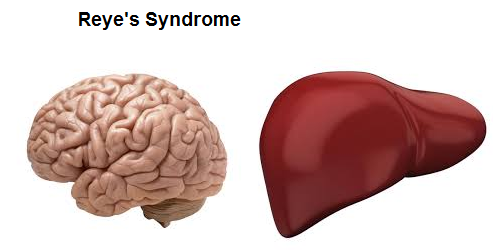Reye's Syndrome

Reye's syndrome is a possibly fatal condition that causes swelling of the liver and brain.
It most often occurs in children who have an acute viral infection, most commonly influenza or chickenpox, and have taken aspirin (salicylates).
The most common symptoms of reye's syndrome include damage to the liver and brain. Damage to the liver causes increased liver enzymes and increased ammonia levels, since the liver breaks down ammonia. The liver may also develop fatty deposits throughout it. Damage to the brain can cause confusion, seizures, loss of consciousness, and encephalopathy.
Being that Reye's syndrome normally occurs with use of aspirin, it is recommended that children
do not take aspirin who
are recovering from an acute viral infection. It is recommended that acetominophen is taken instead.
Non-Electronic Tests To Check for Reyes Syndrome
Various tests that are done to test and diagnose Reye's syndrome.
One test that is done is a lumbar puncture, also called a spinal tap. A lumbar puncture is a test in which a needle is inserted into the spinal canal so that cerebrospinal fluid (CSF) is taken out.
A liver biopsy may be done to check the liver for fatty deposits which is indicative of Reye's syndrome.
Blood work may also be taken to check ALT and AST values. ALT and AST are indicative of liver damage and inflammation. ALT is especially specific to the liver.
If values are elevated, this indicates liver damage.
Electronic Tests to Check for Reye's Syndrome
A CT or MRI scan may be done of the brain in order to monitor for any swelling or any other abnormalities.
A CT scan uses X-rays and takes slices of pictures of brain. The images are 2-D and are detailed.
An MRI uses a strong magnetic field and radio waves rather than X-rays to generate
images of the brain.
Related Resources
How to Vary the Brightness of an LED
How to Build an LED Driver Circuit
How to Build an LED Flasher Circuit